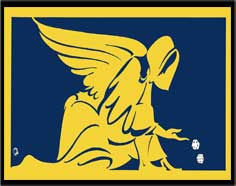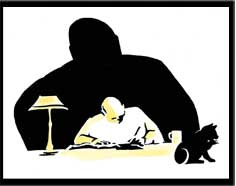This incredibly ambitious attempt to import a huge quantity of marijuana from Thailand to Australia in 1978 remains one of the great stories of the Sydney Underworld. It was also a triumph of policing, as honest cops managed to keep details of their investigation from being leaked to the bad guys, and for the first time successfully prosecuted a major organised crime operation in Australia.
The story begins with Murray Riley, a former policeman and rowing champion, who by then was a major figure in local criminal activities. He was ambitious and smart, and had international connections, including the Mafia on the west coast of America.
In late 1977 Riley put together a syndicate that arranged to buy some 4.6 tons of marijuana, in the form of ‘buddha sticks’, from Thailand and bring it to Australia by sea. Marijuana had been increasingly popular since the early 1970s, and local cultivation was struggling to keep up with demand. Also, in the second half of 1977 the local industry was suffering from a great deal of unwelcome and unaccustomed attention, thanks to the disappearance of anti-marijuana campaigner Donald McKay in Griffith in July.
Riley had been mentioned adversely in the report of the Moffitt Royal Commission in 1974 as an associate of Lennie McPherson and other criminals involved in the looting of Sydney’s wealthy registered clubs. Riley had avoided appearing before the Commission, probably due to his contacts with corrupt police. The government accepted Moffitt’s recommendation to set up New South Wales’ first police intelligence unit, the Crime Intelligence Unit, and the officers of this unit naturally had an enduring interest in Riley.
However, they actually gathered intelligence on the Anoa by way of another criminal, Karl Bonnette. Suspecting him of heroin dealing, they conducted surveillance in early 1978. Bonnette had a luxury cruise boat that he would take out on the harbor with his girlfriend, both sun-baking in the nude. More relevantly, the CIU detectives found he was receiving daily visits from a small-time crook named Sterling McCallum who drove a Triumph Stag sports car. Due to the inactivity of Bonnette, they followed McCallum and tapped his phone. Conversations indicated a close connection to Murray Riley and other well-known criminals. Although the police did not discover the details for a short period of time, it became apparent they had come across a drug importation of extraordinary proportions.
Murray Riley had made some 11 flights to Asia in 1976-77, arranged by Wings Travel Service, a travel agency that specialized in making arrangements for criminals, often under false names. He conducted a number of heroin importations and was also interested in marijuana. In Bangkok in 1977 he arranged the purchase of a huge quantity of buddha sticks, a form of marijuana popular at the time, involving sticky heads of the cannabis plant wrapped around sticks some 15 centimetres long. The retail value of the purchase, if it was ever put on sale in Australia, was estimated to be $80 million at that time.
Apart from Riley, the core syndicate included Reginald Parkin, Kenneth Derley, John Lawrence, Wayne Thelander, Warren Porteus, and Sterling McCallum. Other criminals were also called upon for their assistance in the importation. In February 1978, a fishing boat named the Choryo Maru, chartered by the syndicate, sailed from New Zealand. In March it was joined in Singapore by several of the gangsters, travelling under false passports and heavily armed. It sailed off, nominally for New Guinea, but in fact to Thailand, where it took on board the marijuana.
With the cargo of drugs destined for Australia, the vessel developed engine trouble, and the marijuana was offloaded and placed temporarily in the wreck of a Japanese ship on Pocklington Reef, some 480 kilometres east of New Guinea.
Riley flew to Honiara in the Solomons, posing as a scrap metal merchant interested in salvaging the Japanese vessel. He tried to hire a yacht locally, unaware he was being watched. Failing to find a boat in Honiara, he returned to Australia to purchase a vessel that could recover the cannabis.
On 1 May 1978, detectives from Criminal Intelligence Unit observed Karl Bonnette’s Mercedes sport’s car parked outside McCallum’s Mosman residence, along with an Aston Martin and an Alfa Romeo coupe. Later that evening the notorious gangster Stan Smith arrived in another Mercedes sport’s car, but on noticing the police surveillance vehicle he turned away. The police learned that Bonnette had offered the use of his yacht Siandra to the syndicate, but McCallum did not consider it adequate for the trip to Pocklington Reef.
Riley knew he was being watched, although he had no idea that police by now were aware of his visit to Honiara and suspected some sort of drug importation was underway. He asked a corrupt contact in the Force to make inquiries about cars he thought were following him, quoting their registration numbers. A senior police detective made inquiries at the CIU, and was advised they had no such vehicles. The CIU then quickly removed those vehicles from its fleet.
The CIU detectives observed members of the syndicate inspecting boats at various marinas around Sydney. They suspected the syndicate wanted to collect a drug drop at sea off Sydney, and approached the then Police Commissioner Mervyn Wood for approval to hire a surveillance aircraft to follow any vessel that might put to sea. They advised the Commissioner they suspected Riley of organizing a major drug importation.
Wood was a former Olympian and rowing partner of Riley, and still a friend. He told the detectives he met Riley regularly and had been assured all his old pal was involved with was a bit of gold smuggling. He declined to fund a surveillance plane, and added that if at the end of the investigation it turned out Riley was innocent, he would shut down the CIU.
On 14 May, the CIU informed the Federal Narcotics Bureau of the investigation, without the knowledge of Wood, in an effort to gain funding for surveillance aircraft. Later in the month, CIU police including Detective Senior Constable Geoff Schuberg followed criminals Sterling McCallum and Dominic Brokenshire to Cairns on a commercial flight. During surveillance in Cairns, they tracked them to the Platypus Jetty, where they were observed preparing a motor vessel named the Anoa for sea. The Anoa had been bought by the syndicate for $45,000. It was 10 metres long, and while primarily a motor vessel, had two short masts.
Criminals Ken Derley and John Lawrence, together with Reinder DeGraff, a ship’s navigator, and Van Simpson, a diver, flew to Cairns on a privately-chartered Cessna bringing various firearms with them. On 23 May, the Anoa left for the Pocklington Reef, with Geoff Schuberg photographing the vessel as it headed out to sea, cheekily calling out, “Hey guys, give us a smile!” The crooks had no idea they were under police surveillance.

By June the vessel, with some 2.6 tons of cannabis packed in potato bags, was back near Australia, being monitored, with the help of the RAAF, by state and federal police. An RAAF Orion aircraft dropped sonar buoys down the coast so the boat could be detected from the beat of its engines. To avoid leaks to the underworld, the police operation was tight and secret. On 5 June, as the boat made its way south, Murray Riley and his partner Carol Dean left their home in Sydney in a black Buick coupe and headed south to Bermagui on the south coast. They were joined by other members of the syndicate, Reginald Parkin and his wife Honni, and Wayne Thelander and Warren Porteous. They had hired two large trucks, clearly intended to transport the drugs.
On 8 June, during the Anoa’s voyage south, and off the coast from Coffs Harbour, a small plane on a training flight flew close to the Anoa so its pilot could practice taking photographs. Spooked by this, Ken Derley decided to put in to land to off-load the cargo. On 9 June they berthed in the Camden River inlet near Laurieton, just south of Port Macquarie where they contacted Larry Lamond, a local truck driver, to move the drugs. Two members of the CIU in Sydney, Detective Sergeant John Meadley and Geoff Schuberg, were contacted and directed to Kingsford Smith Airport where they boarded an RAAF Chinook helicopter. While flying over Bateau Bay on the Central Coast, the chopper’s generator caught fire and an emergency landing was made in a local sporting reserve. Another Chinook was flown up from Richmond air base to continue the flight.
Shortly after abandoning the Anoa, Derley had advised Riley. He quickly left Bermagui, with Carol Dean, and returned to Sydney. He told other members of the syndicate at Bermagui he had to visit his sick grandmother, which raises the possibility Derley and Riley intended to dud them.
Riley hired another truck and headed to Laurieton, but the vehicle broke down at Buladelah. On 10 June, while waiting for it to be repaired, he heard on a news bulletin that the drugs had been seized from a garage in Lake Cathie, and offenders had been arrested on the Anoa at Forster.
Commissioner Merv Wood flew to Port Macquarie for press interviews and photographs following the drug seizure and arrests. His real thoughts about the bust were indicated by the fact he did not speak to or congratulate the detectives who had just pulled off this major triumph.
On 14 June, members of the Australian Narcotics Bureau and Papua New Guinea customs officials sailed to Pocklington Reef and recovered the remaining two tons of marijuana.
While many of the syndicate were arrested immediately, Riley escaped, almost certainly due to assistance from corrupt contacts within the police force. He was finally arrested three weeks later after local police found him hiding in South Australia. In his book Drug Traffic, which contains a good account of the Anoa story, Al McCoy suggests that “Riley’s arrest and subsequent trial were handled in a way that raised serious questions about the capacity of the NSW government to counter organized crime.” Riley was treated leniently by police, the courts, and the prison system, where he spent only five years on this occasion.
In total, 14 men were convicted of offences related to the voyage of the Anoa. Most got the maximum of 10 years (five non-parole) except for Derley, who was given a gentle five. This was because after being arrested he’d offered to do a deal and informed detectives about Neddy Smith’s heroin importation group.
Arrests followed this tip-off, but came to nothing when Smith’s police ally Roger Rogerson arranged for the heroin in the exhibit office to disappear. When the defence asked for it to be re-analysed, it turned out to be glucose.
SOURCES: Documents and photographs provided by Geoff Schuberg, further information from Drug Traffic by Alfred McCoy.











You must be logged in to post a comment.